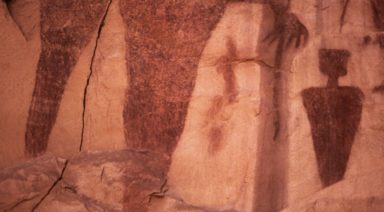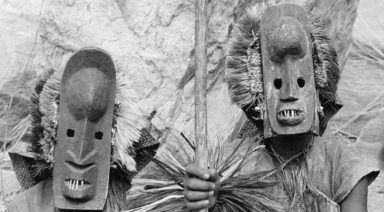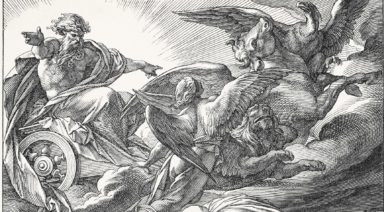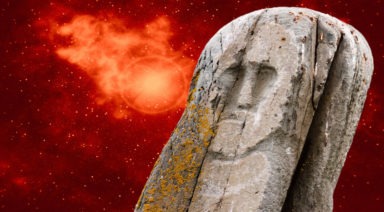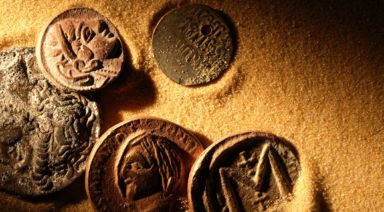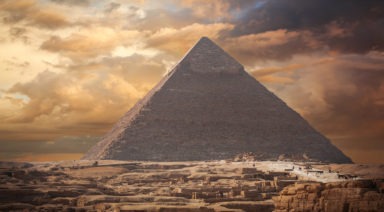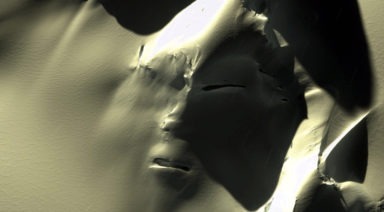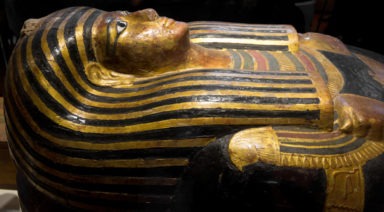Legends and Secrets of the Cosmic Ouroboros

There are few creatures that evoke the range of emotions like the earthbound snake. Across ancient cultures and civilizations, snakes have been viewed as mystical, dangerous, repulsive, and ultimately one of the most fascinating beings in the animal world. However, there might be a deeply rooted reason for human’s fascination with this creature, one that is embedded in the oldest mythology known to humans: Ouroboros, or the one who devours itself.
Translated from the Greek, the word “ouroboros” means “tail devourer,” referring to the circular or figure-eight shape of a snake enveloping itself. One of the oldest mythological symbols known to humans, the ouroboros has been viewed as a symbol of the regenerative cycle of life, enlightenment, renewal, and infinity.
What is the significance of this mysterious and universal symbol, and how did it come to represent so much for so many civilizations?
EGYPT to GREECE to the GARDEN OF EDEN: The Ouroboros Origins
The ouroboros’ origin dates back to ancient Egypt as a symbol of the sun and the sun disk’s travels. Encrypted in the Enigmatic Book of the Netherworld, the engraved stone book found in King Tutankhamun’s tomb, the ouroboros is part of the story of Ra’s mythical journey in the underworld, and is one of the first instances of the symbol being depicted swallowing its tail. As described in the Egyptian Book of the Dead, the Ouroboros is connected to the creator god Atum, often described as being in the form of a water serpent.
From Egypt, the Ouroboros found its path to ancient Phoenicians and ancient Greece, where it is believed the symbol received its name as it is known today. Greek alchemists associated the ouroboros symbol with gold and the path of endless return, or the “One in All.”
In fact, Plato writes of the Ouroboros as being the first living creature in the universe, and that the self-swallowing being represents a completely self-contained system with no need for anything outside of itself.
From Plato’s interpretation, the Gnostics expanded on the theory that the Ouroboros represents the soul of the world.
For some it is the embodiment of evil; for others the reflection of knowledge, in the Judeo-Christian tradition, the Ouroboros, which we know as the serpent in the Garden of Eden, represents the external or human-bound world, or one that resides outside of “God.”
It can also be said that the snake, or ouroboros, can be attributed to what we now call “awareness,” in that after listening to the snake and eating from the Tree of Knowledge, Adam and Eve became aware of their nakedness, or innate humanity.
In the Hindu religion, Ouroboros is equated with Kundalini or the essential energy that resides, coiled in the base of the spine. According to the Upanishads, “the divine power, Kundalini, shines like the stem of a young lotus; like a snake, coiled round upon herself she holds her tail in her mouth and lies resting half asleep as the base of the body.” The Hindus are also among the religions that associates the Ouroboros with the divine feminine energy.
This connection to the feminine would also be mirrored in the Far Eastern interpretation of the Ouroboros with the concept of yin yang, the cosmological balance between light and dark, matter and energy, or the concept of duality. For the ancient Chinese and Japanese, duality represents opposites which form a divine unity, with each aspect being equal in such a creative and reproductive power, that a universe could emerge from the sacred union.
For other cultures, the Ouroboros symbolizes a strong male energy, such as in the Norse culture with Jormungand, the Midgard serpent and son of Loki and Angrboda, who resides in the ocean which encompasses the seen world. The ancient Aztecs portrayed their god, Quetzalcoatl as a serpent biting his own tail, as seen in the ruins such as the Pyramid of the Feathered Serpent.
Still other ancient cultures, such as the Mayan, believe that the Ouroboros is the embodiment of a cosmic and prophetic cycle, or a magnetic pole shift which has always impacted how humans communicate and perceive our world.
This cosmic belief runs parallel to the alchemical associations of the Ouroboros, as described in the ancient Greek text, Chrysopoeia of Cleopatra (unrelated to the Egyptian queen). In the alchemical world, the Ouroboros is a purifying symbol, preparing the path for release, liberation, and the unification of the conscious and unconscious realms.
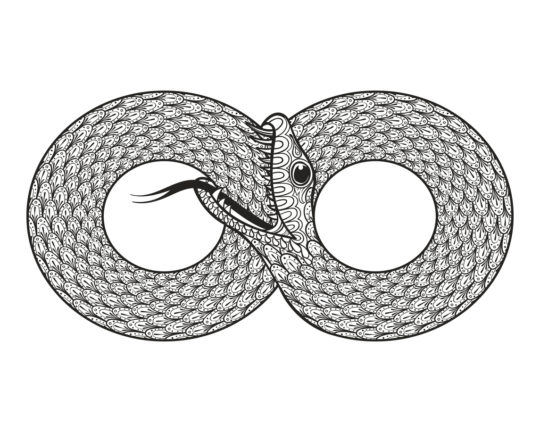
Not to be limited to terra firma, the ouroboros is also connected to the celestial realms, with mythological connections to the Milky Way, with the serpent shape representing the heavenly stars, as well as in scientific realms. Chemist August Kekule saw connections to the snake symbol in his discovery of the compound benzene. Exhausted by his efforts at studying the elusive atomic structure, he fell asleep and reportedly dreamt of the atoms working in unison to form into the shape of the Ouroboros, which inspired Kekule to persevere until he finally proved his benzene theory.
We can even see the existence of the Ouroboros in the art world. M.C. Escher’s famous “Drawing Hands,” often viewed as containing the essence of the circular serpent’s symbolism.
The Ouroboros is a symbol that defies time and civilizations; it would be difficult to find one that has touched so many ages and come to represent so many aspects of this and other worlds. Today, we can turn to this ancient icon as a way to find balance in our often fractured and disconnected world. From the night sky to the atomic structures that make up our universe, the Ouroboros continues to provide answers, as well as leads us into deeper meanings.
Mount Roraima: A Floating Island Shrouded in Mystery

Hiking is a great way to explore nature, get exercise, spend time with friends, and … travel back in time?
Even for the most seasoned of explorers, Mount Roraima, a plateaued mountain about 1,300 feet high, located where Brazil, Venezuela, and Guyana converge, might prove to be an experience far beyond the typical.
Mount Roraima National Park, also known as “Monte Roraima” and the “floating island of Venezuela,” is different than the usual hiking trail or even the usual mountain. Its remote location, mixed with the mysterious air of untouched territory and indigenous folklore, makes it an adventure that promises much more than many who climb it bargained for.
Mount Roraima History
Before European conquistadores arrived in South America, indigenous populations revered Mount Roraima as a regional symbol, referring to it as the “Axis Mundi,” a tree where all the world’s fruits and vegetables grow. It was a peaceful and tranquil place, protected by the Macuxi people.
However, over time, the arrival of foreigners in search of El Dorado and landscapes steeped with gold meant that the purity of Mount Roraima would not remain intact forever.
Later, the arrival of miners marked a change in the environment of Mount Roraima, with alcohol, violence, prostitution, and venereal disease infecting the area. High-pressure water hoses blasted open the land in search of treasure left pools of water, which bred disease. The Macuxi thought they would be able to peacefully coexist and work together with the miners, but this turned out not to be the case.
The trend continued into the present day.
The Brazilian government sought to build dams, roads, and form a municipal government over the territory, claiming those in the region wanted the same infrastructures as the rest of the country. However, the Macuxi stood their ground against the changes, blocking construction and impeding the development where possible.
For the time being, the dam project has been abandoned, with the governor citing the expense to reach the remote location as the primary reason for leaving it behind, not the Macuxi resistance.







